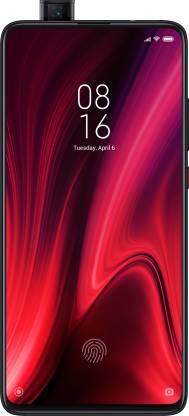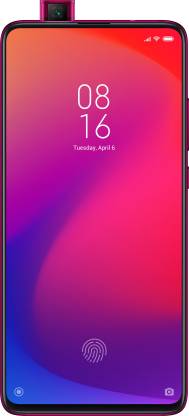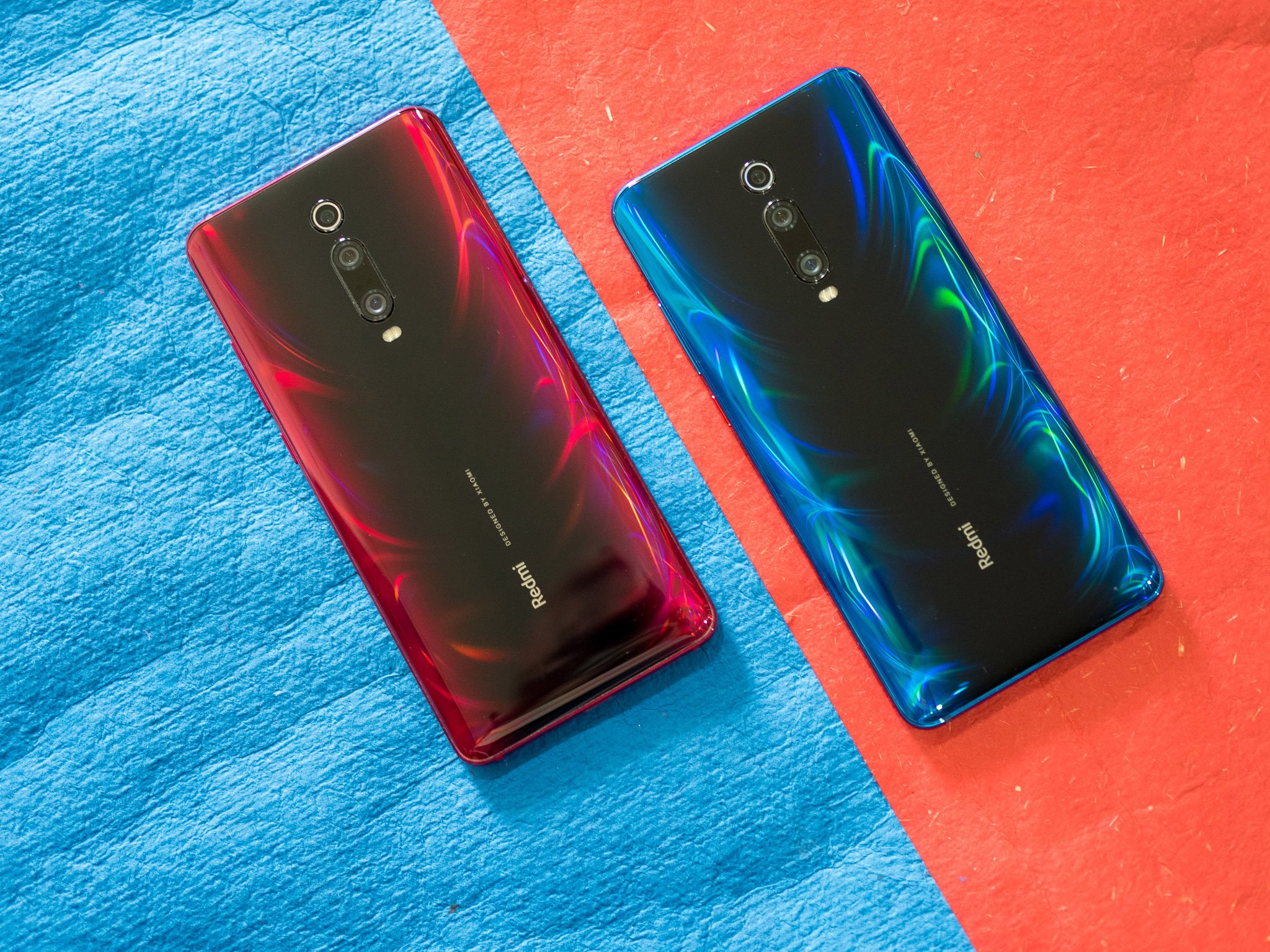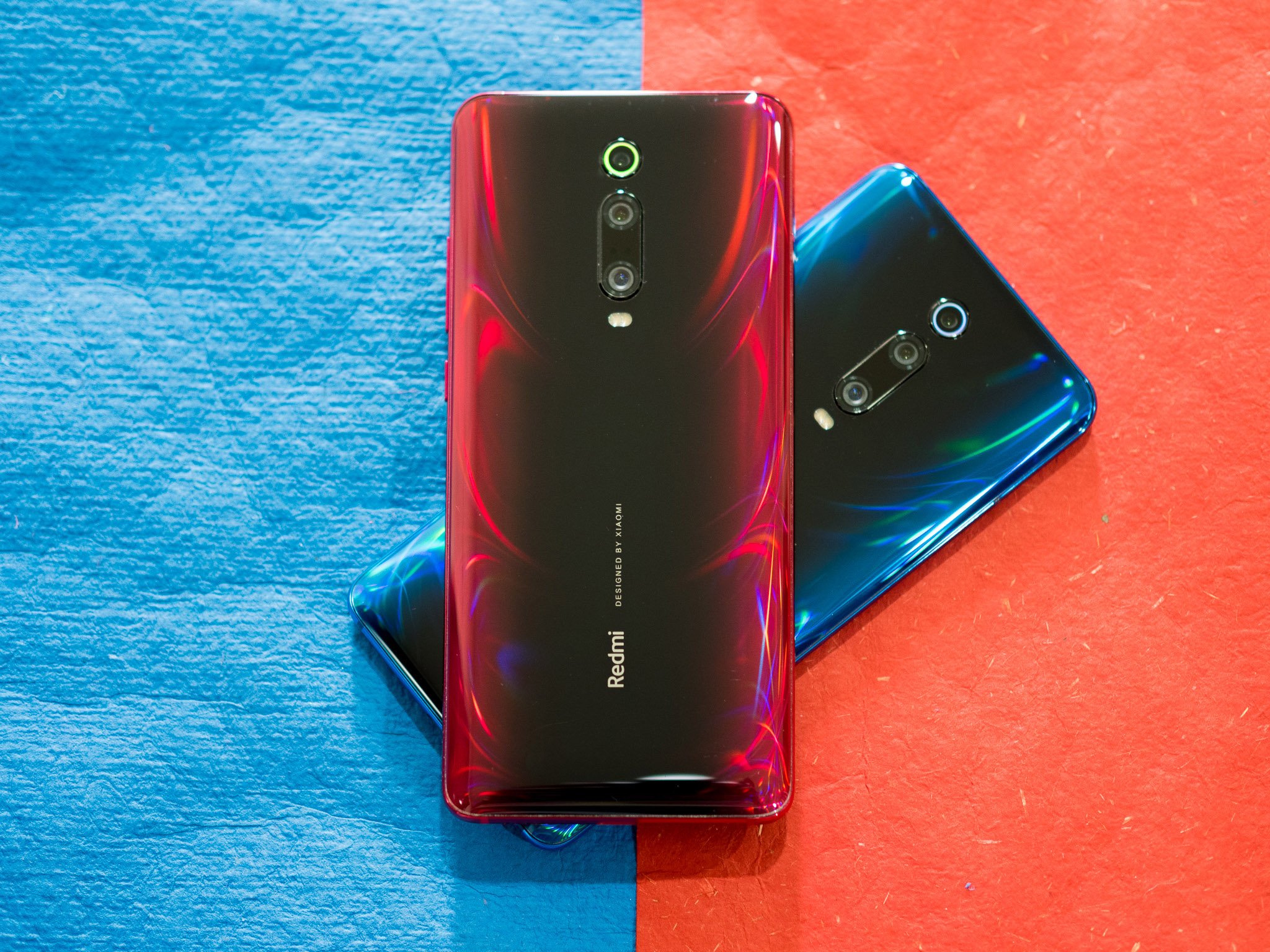Redmi K20 Pro vs. Redmi K20: Which should you buy?
Xiaomi has two great options if you're in the market for a value flagship in 2019. We've used both devices extensively, and are here to assist you in your purchasing decision.
Redmi K20 Pro
The default choice
Pros
- Outstanding value
- Two-day battery life
- Gorgeous design
- Snapdragon 855 platform
- 3.5mm jack and AptX HD
Cons
- Limited availability
- Notification LED isn't useful
- No NFC
The Redmi K20 Pro is one of the best value flagships of 2019. It has all the bells and whistles — there's a Snapdragon 855 under the hood, it has a retractable module for the front camera, and you get a 4000mAh battery that lasts for two days. All that hardware is backed by a gorgeous design with an aggressive gradient effect at the back, leading to a device that just gets everything right.
Redmi K20
More accessible
Pros
- Same great design as K20 Pro
- 48MP primary sensor
- Two-day battery life
- 3.5mm jack and AptX HD
- Decent hardware
Cons
- Availability issues
- Same issues with notification LED
- 4K video limited to 30fps
- No NFC
The Redmi K20 shares a lot of the same hardware as the K20 Pro: you get the same stunning design, AMOLED display, retractable camera module, 4000mAh battery, and the same 48MP Sony IMX586 sensor at the back. The only major difference is that the device is powered by the Snapdragon 730 and not the Snapdragon 855, and the base variant has 64GB of internal storage.
Xiaomi knows how to make a solid value flagship, and this year it is offering two enticing options in the Redmi K20 Pro and K20. Both phones share a lot of the same hardware and have the same gradient design, with a few key differences. Here's what you need to know about what's on offer, and the best option for your needs.
Two great phones with a few key differences
At first glance, it's hard to make out any differences between the Redmi K20 and K20 Pro: both phones have the same design, and they share a lot of the same hardware. Xiaomi is differentiating the devices based on the chipset — the Redmi K20 Pro gets the flagship Snapdragon 855, with the standard K20 picking up the Snapdragon 730. In fact, the Redmi K20 is one of the first devices to be powered by the Snapdragon 730, which has cores derived from the Cortex A76 — the same as the Snapdragon 855.
Both phones have the same design and share a lot of the internal specs — with the Snapdragon chipset being the differentiator.
The key difference between the two chipsets is down to the GPU. You get the Adreno 640 on the Snapdragon 855, with the Snapdragon 730 featuring the Adreno 618. The Adreno 640 is one of the fastest mobile GPUs around, cruising through any Android game in the market today. The Snapdragon 730 platform bridges the gap to the Snapdragon 855, but if you want the latest hardware available today, you're better off picking up the K20 Pro.
That said, the Snapdragon 730 is no slouch. I didn't see any slowdowns in the two weeks I used the standard K20, and the device is just as capable of playing most games. The Snapdragon 855 just has that little bit extra, allowing it to stand out.
Other than that, both phones are identical. You get the same metal-and-glass design on both phones, and they're also available in the same color options: Carbon Black, Flame Red, and Glacier Blue. That means you get the same stunning gradient effect on either device. Heck, they have the same dimensions and weight, so that should give you an indication as to how much both devices have in common.
Both devices also have notchless displays thanks to retractable modules for the front cameras, and they're both rocking the same 6.39-inch AMOLED screen. The similarities extend to the camera side of things as well: both phones have the same camera configuration at the back, with a 48MP Sony IMX586 sensor joined by an 8MP telephoto lens and 13MP wide-angle shooter.
You get the same 48MP camera on both phones, but the Redmi K20 misses out on 4K 60fps video recording.
That said, the Redmi K20 Pro offers 4K video recording at 60fps, and on the Redmi K20 you're limited to 4K at 30fps. Shooting 4K at 60fps is still exclusive to the Snapdragon 8xx series, and as good as the Snapdragon 730 is at everyday tasks, it only shoots 4K at 30fps.
As you'd imagine with two devices that share the same hardware, image quality is near-identical. The K20 Pro takes marginally better shots because of the ISP, but the overall difference is negligible.
There's also a 3.5mm jack on both devices, the same in-display fingerprint reader, and a notification LED tucked away on the retractable camera module. The positioning of the LED is less than ideal, and it isn't particularly useful. Elsewhere, you get Wi-Fi ac, Bluetooth 5.0, and AptX HD as standard on both devices.
You also get the same 4000mAh battery on both devices, but the Redmi K20 Pro has 27W fast charging versus 18W on the standard model. That said, both devices come with the same 18W charger out of the box, and you'll have to shell out ₹999 to get Xiaomi's 27W charger.
| Category | Redmi K20 Pro | Redmi K20 |
|---|---|---|
| Operating system | Android 9.0 Pie MIUI 10 |
Android 9.0 Pie MIUI 10 |
| Display | 6.39-inch Super AMOLED 2340x1080 (19.5:9) HDR Gorilla Glass 5 |
6.39-inch Super AMOLED 2340x1080 (19.5:9) HDR Gorilla Glass 5 |
| Chipset | Snapdragon 855 1 x 2.84GHz Kryo 485 3 x 2.41GHz Kryo 485 4 x 1.78GHz Kryo 485 Adreno 640 7nm |
Snapdragon 730 2 x 2.20GHz Kryo 470 Gold 6 x 1.80GHz Kryo 470 Adreno 618 8nm |
| RAM | 6GB/8GB | 6GB |
| Storage | 128GB/256GB | 64GB/128GB |
| MicroSD slot | No | No |
| Rear camera 1 | 48MP, f/1.8 0.8um Dual Pixel PDAF |
48MP, f/1.8 0.8um Dual Pixel PDAF |
| Rear camera 2 | 8MP, f/2.4 telephoto |
8MP, f/2.4 telephoto |
| Rear camera 3 | 13MP, f/2.4 124-degree field-of-view |
13MP, f/2.4 124-degree field-of-view |
| Front camera 1 | 20MP, f/2.2 HDR |
20MP, f/2.2 HDR |
| Connectivity | Wi-Fi ac 2x2 MIMO Bluetooth 5.0 AptX HD, LDAC, A-GPS |
Wi-Fi ac 2x2 MIMO, Bluetooth 5.0 AptX HD, LDAC, A-GPS |
| Audio | 3.5mm jack Single speaker |
3.5mm jack Single speaker |
| Battery | 4000mAh Non-removable |
4000mAh Non-removable |
| Charging | USB-C 2.0 27W |
USB-C 2.0 18W |
| Water resistance | No | No |
| Security | In-display fingerprint | In-display fingerprint |
| Dimensions | 156.7 x 74.3 x 8.8mm 191g |
156.7 x 74.3 x 8.8mm 191g |
| Colors | Carbon Black, Flame Red, Glacier Blue | Carbon Black, Flame Red, Glacier Blue |
It all comes down to price
At the end of the day, choosing between the Redmi K20 Pro and K20 comes down to the price. Both phones offer incredible hardware and great value, and it's all a matter of figuring out how much you want to pay for either device.
If you want the absolute best, get the Redmi K20 Pro. If you're on a budget, the K20 is a stellar choice.
If you're looking to get your hands on the best that Qualcomm has to offer right now, then the Redmi K20 Pro is the obvious choice. The phone has everything you're looking for in a value flagship, and the base variant comes with 6GB of RAM and 128GB of storage.
The Redmi K20, meanwhile, delivers most of the same features at an even lower price point. You're getting the same design, 48MP camera, 4000mAh battery, in-display reader, and the same display. The only point of difference is the Snapdragon 730, and the fact that the base version of the phone comes with 6GB of RAM and 64GB of storage. If you're okay with that, the Redmi K20 is a fantastic choice.
Redmi K20 Pro
The default choice
The best value flagship in 2019
The Redmi K20 Pro absolutely delivers in the areas that count: you get access to Qualcomm's latest silicon, there's a notchless display, the 48MP camera takes stunning photos, and the 4000mAh battery lasts two days. Combine that with one of the best gradient designs in the market today and you get a phone that raises the bar for value flagships.
Redmi K20
More accessible
Same great design and features at a lower price point
With the Redmi K20, you're getting 90% of the same device as the K20 Pro. The only areas where the device differs from the Pro model is the chipset — you're getting a Snapdragon 730 instead of the Snapdragon 855, and there's 64GB of internal storage on the base version. Other than that, you get the same hardware as the Pro model, making it a great option.
from Android Central - Android Forums, News, Reviews, Help and Android Wallpapers https://ift.tt/2SQZvcL






Post a Comment